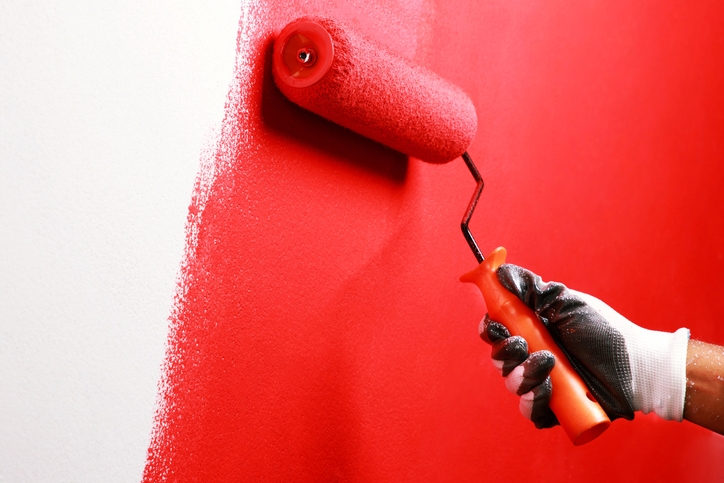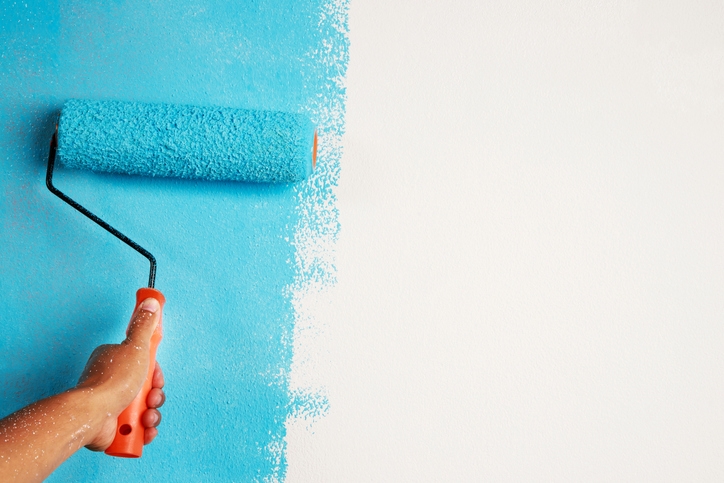
Feng shui, an ancient Chinese practice of arranging objects in living spaces to achieve harmony and balance in the natural world, is practiced in other places besides China.
Color is also an essential aspect of feng shui. Feng shui experts and practitioners use color when inviting or adjusting the energy of living space. Color significantly impacts our mood and activity, and it’s also one of the simplest elements to alter or change.
Creating a color palette according to feng shui can help you attain your interior decorating goals by incorporating the positive “chi” (energy).
Using the feng shui elements when choosing color is not complicated. The good news is that there are no restrictions on selecting colors – feng shui guides you to place your favorite colors in the best areas for adding or boosting your home’s energy.
Feng Shui Colors for the Room
Whether creating a color palette based on feng shui elements or using the bagua map (feng shui energy map), personal preferences still play a huge role when choosing colors for your interiors.
If you’re interested in learning more about placing colors from a feng shui context, here’s a guide that will help you choose colors the feng shui way.
- Red
In Eastern culture, in particular, red is an auspicious color. It is heavily associated with good luck and fortune.
Needless to say, red is the most powerful color in feng shui. Being an intense color, red supersedes all the other colors. Red is also believed to be the lucky color to ward off evil spirits. Thus, this color is often used to protect and clear a home or an individual’s energy.
Red is an energizing color, so too much of it can be overwhelming. It’s best to use red in doses to redirect energy around the home. Also, avoid too much red, especially if you’re suffering from anxiety or insomnia.
Red represents the “Fame and Reputation” (“Li”) area of the bagua map, which is associated with inspiration, visibility, and clarity.
- White
White represents the “yang” side in the yin-yang symbol (Tai Qi). In many cultures, white is connected to winter – a dormant state where the earth rests. Having the absence of color, white connotes a blank slate or new beginnings.
White is also connected to the metal element, symbolizing mental clarity, completion, and productivity. And since white represents completion and joy, the color is associated with the “Children and Completion” (“Dui”) area of a feng shui bagua map.
Try exploring several shades of white to complement other colors.
- Black
If white symbolizes the absence of colors, black represents the sum of all colors. Black is the “yin” side of the yin-yang symbol (Tai Qi).
In Western culture, black is associated with darker themes and mourning. But in feng shui, black has a more positive connotation and is connected to introspection and personal exploration.
Black is connected to the “Career and Path in Life” (“Kan”) area of the feng shui bagua map. It also represents the water element, connected to stillness, quiet contemplation, and wisdom.
Of course, too much black can be depressing. So, in general, black is best used as an accent color to bring elegance and sophistication into your room.
- Green
Green is connected to the “Family and New Beginnings” (“Zhen”) area of the bagua map. The color is also associated with harmony, fresh energy, renewal, and regeneration. When working with this color, having at least a handful of shades is essential to maximize the positive chi.
Incorporating green into your home can be done in other ways than wall paint color. It can be green home accents or even a living houseplant.
- Blue
Blue connotes calmness. But in feng shui, the meaning of this color changes depending on the shade or tone.
For example, teals and other blue mid-tones represent the wood element associated with compassion, growth, and vitality. Deeper blues, on the other hand, represent the deep, dark water element.
In many Eastern cultures, certain shades of blue are associated with mourning. In Buddhism, blue symbolizes well-being, as represented by the blue Medicine Buddha. The color is also connected to the “Family and New Beginnings” (“Zhen”) and “Knowledge and Self-Cultivation” (“Gen”) areas of the bagua map.
- Pink
Pink is connected to the “Love and Partnerships” (“Kun”) area of the bagua map. It’s a delicate color that stimulates self-love, softness, or romance. But if you’re timid and looking to be more assertive, steer clear of this color.
- Brown
Brown is connected to the “Center and Health” (“Tai Qi”) area on the bagua map and brings the earth element into your home. The earth element is connected to stability, grounding, and self-care.
Incorporating earthy tones into your walls or even brown wood floors and furniture is a great way to introduce the earth element into the room.
- Gray
Gray is a combination of black and white. However, it is also connected to the “Helpful People and Travel” (“Qian”) area of the bagua map, which helps you connect to the helpful people in your life. Or if you want to travel more, gray is a great color.
As a neutral color, gray can work in most homes as a dominant or accent color.
- Yellow
Yellow is the color of the earth element and is connected to the “Center and Health” (“Tai Qi”) area of the bagua map.
Yellow also represents humility and high standing. In Buddhism, monks wear ochre yellow robes as a sign of humility and surrender. On the other hand, Chinese emperors wore bright golden yellow robes to mark their high standing.
- Orange
Orange, a combination of yellow and red, makes it an intense color. It combines the power of red and the stability of yellow.
Like blue, the meaning of orange in feng shui depends on the shade. It brings together the elements of fire and earth. Bright and fiery orange reminds one of the golden embers in a fire, while paler, yellow-orange is more earthy. Orange is connected to the “Center and Health” (“Tai Qi”) area of the bagua map.
- Purple
For most people, purple brings richness and luxury to mind. The meaning of purple is not so remote in feng shui, as this color is connected to “Wealth and Abundance” (“Xun”) of the bagua map. Purple is also connected to nobility.
Purple is an excellent color if you want to surround yourself with power, prosperity, and abundance. You can use several shades of purple, from lavender to deep eggplant tones. Being a combination of red and blue, purple can also invite balance and harmony.
Using color consciously can improve and enhance one’s life. Keep in mind that their meanings change with various shades. There’s nothing wrong with following the feng shui principles when choosing colors for your home – the right colors can invite and enhance positive energy in your room.
If you’re undecided about which colors to use for your home, the bagua map or feng shui elements can help. But before doing anything else, first, define your intention for the space you will be painting and decorating. You can also ask Custom Painting, Inc. to help with your interior painting in Danville.




